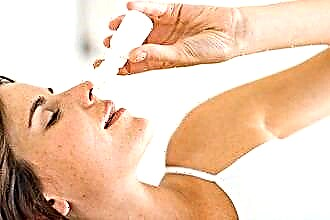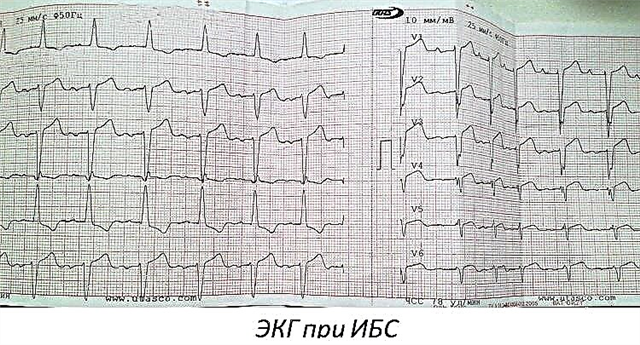There are various ways to treat maxillary sinusitis, depending on the causative agent of the disease, its form and stage, the degree of neglect and the severity of the patient's condition. Often, when treatment is started when the first symptoms appear, you can only do with pills and folk remedies. However, with an acute course of the disease or an untimely visit to a doctor, it becomes necessary to urgently cleanse the sinuses from pus. Consider further how a puncture is made with sinusitis.
Indications and contraindications for puncture
 An otolaryngologist takes a number of factors into account when deciding how to treat sinusitis. With catarrhal sinusitis (without pus) or if there is a possibility of a free outflow of exudate from the accessory pockets, there is no need for surgical intervention, antibiotics, antiseptics, mucolytics and vasoconstrictor drops will be enough.
An otolaryngologist takes a number of factors into account when deciding how to treat sinusitis. With catarrhal sinusitis (without pus) or if there is a possibility of a free outflow of exudate from the accessory pockets, there is no need for surgical intervention, antibiotics, antiseptics, mucolytics and vasoconstrictor drops will be enough.
In more complex cases, surgical intervention is required to evacuate purulent-mucous accumulations from the affected sinus. Most often, the patient is offered a puncture, which is a minimally invasive, simple operation, in which a hole is made in the wall of the sinus through which the pathological contents are sucked out, and the necessary therapeutic measures are taken.
The indications for the appointment of a puncture can be:
- The severe condition of the patient, accompanied by severe pain in the sinuses or the entire head, which cannot be stopped with painkillers, as well as hyperthermia above 38 degrees.
- Lack of effect for a week from drug therapy, as well as from deep flushing of the accessory pockets using the "cuckoo" method or YAMIK catheterization.
- Complete blockage of the connecting channel, which stops aeration and drainage of the cavity.
- The presence in the sinus of a horizontal level of fluid or blood accumulations, which is confirmed by computed tomography or radiography.
- Bad breath, which may indicate the odontogenic nature of the disease.
- The need to obtain material from the air chamber for bacterial analysis with a difficult diagnosis.
There are conditions in which a puncture cannot be done in order to avoid a worsening of the patient's condition:
- early childhood;
- the presence in the body of other acute infectious diseases;
- severe diseases of a chronic or autoimmune nature (hypertension, blood diseases, diabetes mellitus);
- individual features or pathologies in the structure of the accessory pockets (hypoplasia or irregular sinus shape).
Most often, apart from life-threatening conditions, the doctor leaves the patient the right to choose whether to have a puncture or treat sinusitis with traditional methods. This takes into account contraindications, the general condition of the patient, his individual characteristics.
Preparing for surgery
A puncture is a surgical intervention that all otolaryngologists are able to perform. The more practice a doctor has, the better he or she performs this procedure. The puncture is performed in a hospital setting, most often on an outpatient basis. Inpatient treatment is prescribed only when there is a threat of complications or in severe cases.
No special preparations are required before the puncture, only standard procedures: a blood test from a finger and a test for an allergic reaction to the antibiotic that will be used. If the operation is planned, the doctor may ask the patient not to have a heavy breakfast so that the gag reflex does not occur when the purulent exudate leaves. Also, the patient needs to prepare psychologically, try not to get nervous and not "wind up" himself, if it is difficult to cope with anxiety, you can take a mild sedative, for example, valerian extract.
If a child or adolescent is preparing for a puncture, then the parents should tell him in advance about the essence of the upcoming actions of the doctor, and during the intervention, be there to calm the child. Children are often afraid not so much of the upcoming discomfort as of the medical instruments that are used for the operation.
How is the puncture performed for sinusitis
In order to better understand the essence of the operation, it is worthwhile to consider in stages how a puncture is made with sinusitis. The whole operation lasts no more than 10-15 minutes, including preparation, puncture, washing and administration of drugs. In this case, the patient sits on a stool or in a chair, is conscious and can observe all the actions of the otolaryngologist. A schematic diagram of a puncture for acute sinusitis looks like this.
Anemization. 10 minutes before the start of surgery, procedures are performed to reduce swelling of the soft tissues of the nasal cavity. This is necessary so that the needle can easily reach the puncture site and be able to see the operated field normally. For anemization, vasoconstrictor drops or an adrenaline solution are used, which moistens the turunda introduced into the nasal passage.
Anesthesia. General anesthesia is rarely used, only in difficult cases when the patient must be completely immobile. General anesthesia is needed to carry out an intervention in a child or an overly impressionable patient whose fear of puncture exceeds the fear of complications of sinusitis.
 The most commonly proven drugs used as local anesthetic are:
The most commonly proven drugs used as local anesthetic are:
- 4% lidocaine,
- tetracaine,
- novocaine,
- trimecaine.
There are different methods of injecting anesthetic, the most common is superficial, in which a turunda or tampon soaked in an anesthetic drug is inserted deep into the nose on a long thin wire.
Some doctors skip the stage of anemization and combine it with anesthesia by placing turunda dipped in a mixture of, for example, adrenaline and lidocaine into the nasal passage. The infiltration method (injection) is used less often. When the drug works, the patient feels numbness in the tissues in the nose.
Puncture. The doctor inserts a thick-walled Kulikovsky needle with a cannula in the back and a slightly bent tip into the nasal passage. The sharp end of the needle is placed in the thinnest part of the sinus wall. To pierce the bone, the otolaryngologist has to make an effort, while an unpleasant crunch is heard, but the puncture itself lasts no more than a second. The needle enters the cavity approximately 1 cm.
Flushing and infusion of drugs. A syringe filled with saline is connected to a needle located in the sinus, to which antiseptics (furacilin, miramistin) or mucolytics are sometimes mixed. Liquid is poured into the chamber, thinning the thickened exudate. At the same time, the patient sits and holds a tray in his hands, into which the purulent contents drain. After the pus is evacuated, a medicine is injected into the chamber. Usually it is an antibiotic (Ceftriaxone, Cefazolin) or an antifungal drug (depending on the causative agent of the disease). After the end of the procedure, a tampon soaked with an antiseptic is inserted into the nasal passage. In an hour, the patient can go home.
To completely suppress pathogenic bacteria or fungi, one puncture is not enough. Standard medical practice includes 3 to 5 interventions that are performed daily or every other day. In case of inpatient treatment, it is possible to install a catheter in the punched hole for several days for active drainage of the chamber and injecting drugs, this avoids additional tissue injury.
Possible complications during the operation
The puncture itself is not particularly dangerous. Problems arise with insufficient qualifications of the doctor or inappropriate patient behavior.However, the reason may also be a non-standard structure of the maxillary sinus or an unforeseen reaction of the body to the manipulation of the doctor.
The list of possible complications includes the following positions:
- Bleeding. They can be small (capillary), which are easy to eliminate, and large, resulting from damage to a larger vessel, then an anterior nasal tamponade should be done.
- Embolism of blood vessels or tissues. Due to a doctor's mistake, pus can enter the vessel or soft tissue and cause sepsis.
- Abscess of soft tissues (for example, cheeks) when pharmacological preparations are mistakenly injected into them.
- Emphysema of tissues due to the penetration of air bubbles into them.
- Perforation of the upper wall of the sinus and the spread of infection in the eye with possible impairment of vision.
- Meningitis due to the penetration of bacterial microflora into the cerebral cortex.
- A sharp decrease in pressure, fainting and shock due to the patient's experiences.
These complications are rare, and the vast majority of interventions take place without any problems. The patient feels the result almost immediately: the pain syndrome weakens sharply, the temperature drops, nasal breathing improves.
Common misconceptions about a puncture
Popular rumor ascribes to puncture a large number of negative qualities that are unusual for it. Let's dwell on some of them:
- They say that once having made a puncture, a person with any cold will be forced to pierce the sinus again to heal. In fact, a timely visit to the hospital and the fulfillment of all the doctor's prescriptions in most cases allows you to cure the disease forever. Otherwise, the ailment can become chronic, its treatment can drag on for months and years, including the need to resort to punctures.
- They say that a puncture is a terribly painful operation, so it's better not to agree to it. In fact, pain relievers eliminate almost all of the pain when the camera is pierced. Short-term discomfort can occur when fluid is pumped into the sinus to thin mucus and some time after the end of the procedure. This can be remedied by taking a pain reliever pill. During the operation, the patient is more afraid of the crunch when the bone is broken.
- They say that a punched hole in the bony wall of the sinus heals for a very long time. Practice shows that bone tissue is perfectly and quickly restored after damage of this kind, therefore, after 3-4 weeks, the sinus wall will be complete again.
Despite all the fears and prejudices, sinus puncture was and remains a reliable and proven way to quickly and effectively defeat maxillary sinusitis, to prevent the transition of the disease to the chronic stage and the development of life-threatening complications.



